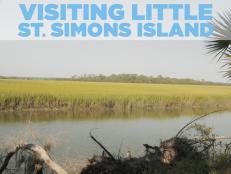1 / 9
Photo: Johnson Pictures Inc.; GoldenIsles.com
Cassina Garden Club Slave Cabins
A significant piece of African-American history resides on a former working estate at Casciogne Bluff on the western side of the island. There, in the late 18th century, James Hamilton built four slave quarters made of tabby—a mixture of lime, sand, water and oyster shells—as part of a planned community of slave dwellings to work the 500 acres that harvested Sea Island cotton and logged timbers. British troops later raided and looted the estate during the War of 1812, liberating many of Hamilton’s slaves.
The Cassina Garden Club were deeded the property in 1950 and proudly took on the role of land stewards, restoring the two remaining cabins with as much historic accuracy as possible. Their work earned the cabins a place on the National Register of Historic places in 1988.








